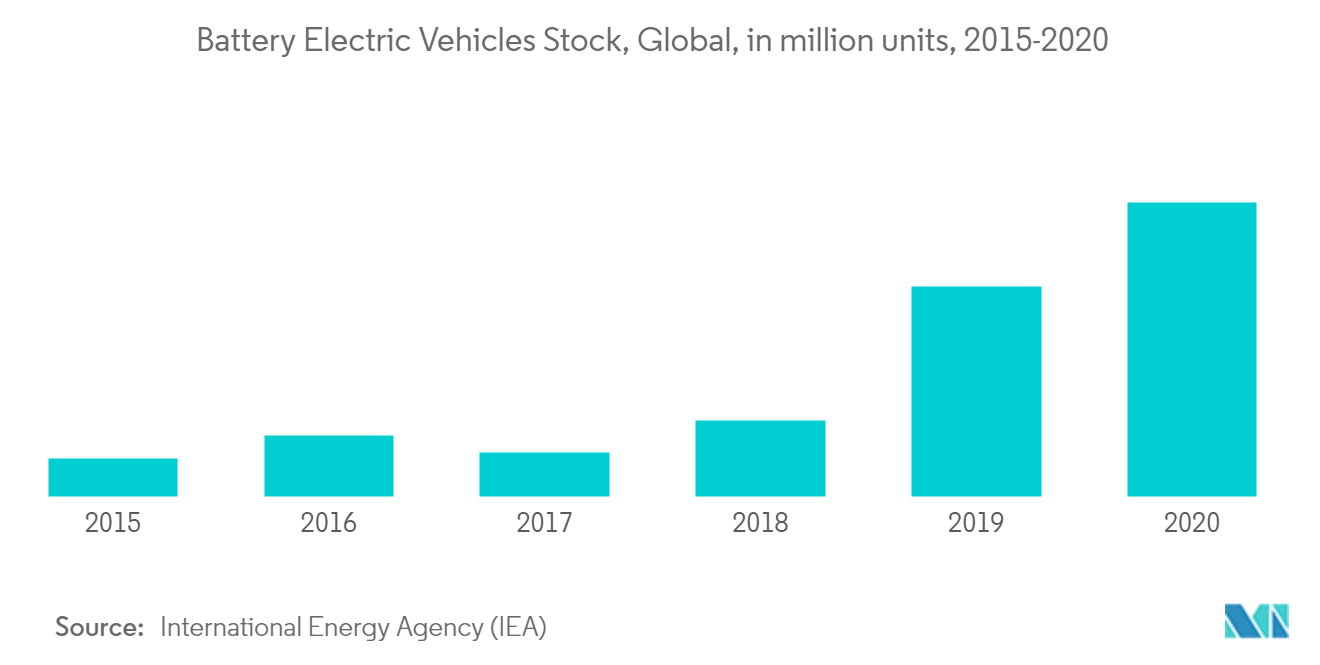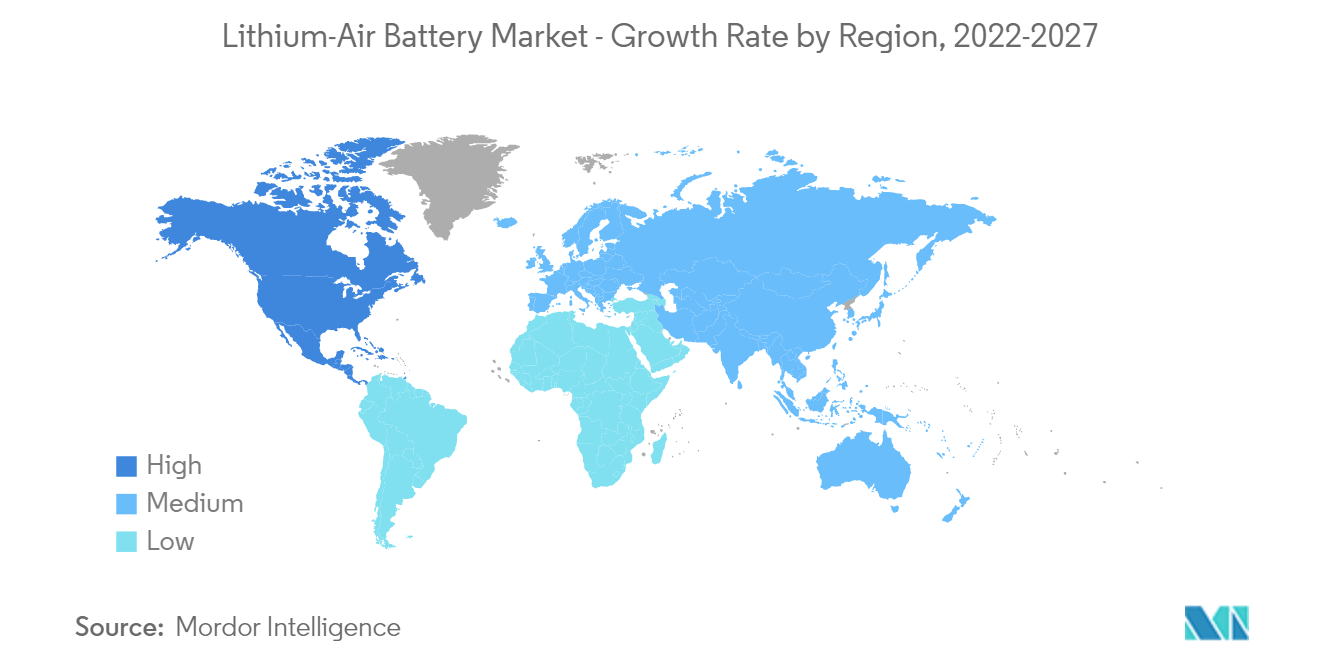Market Trends of Lithium-Air Battery Industry
This section covers the major market trends shaping the Lithium-Air Battery Market according to our research experts:
Automotive Segment Holds the Significant Share in the Market
- The need for reduced reliance on imported oil and emissions due to transportation has buoyed the development of electric vehicles (EVs). Additionally, governments worldwide are pushing for EVs to reach mass adoption. Several steps have been adopted, such as a significant reduction in the prices and availability of an increased range of EVs.
- The conventional lithium-ion batteries offer a driving range of approximately 100 miles on a single charging cycle. They are, therefore, considered to be expensive in the manufacturing of an electric vehicle. As a result, the new and innovative lithium-air batteries have been gaining traction in the automotive industry because of high-performance features provided at a cheaper cost. For Instance, in January 2022, researchers at Japan's National Institute of Materials (NIMS) and Softbank Corp. announced the development of a lithium-air battery with an energy density of over 500Wh/kg, which is significantly higher than current lithium-ion batteries
- In 2020, there were 10 million electric cars on the world's roads at the end of the year, following a decade of rapid growth. According to the International Energy Agency (IEA), electric car registrations increased by 41% in 2020, which is expected to drive the demand for lithium-air batteries.
- In addition, global electric vehicle stock reached 11.21 million units at the end of 2020, with China accounting significant share of 5.4 million units. Thus, the increase in the growth of electric vehicle stock will drive the demand for lithium-air batteries in the future.
- Research conducted by MIT has shown that lithium-air and zinc-air batteries are the most suitable alternatives for the next-generation secondary batteries for EV applications.
- Moreover, the Samsung Advanced Institute of Technology (SAIT) has been actively researching the next-generation LIB electrode materials and post-Lithium-ion battery systems, such as all-solid-state and lithium-air battery technologies. This is expected to enable the driving range of EVs to be equivalent to that of conventional vehicles.
- Similarly, other companies, such as Toyota and IBM, have also taken a keen interest in developing these batteries for EVs through increasing investment with high R&D activities based on technological advancements.

North America is Expected to Dominate the Market
- North America held a significant share of the market in 2020. The expected increase in the penetration of lithium-air batteries in consumer goods and electronic appliances such as smartphones, smart wearable, smart home appliances will open enormous opportunities for growth in the global lithium-air battery market in the region.
- The increasing demand from consumers for a thin, smaller, and advanced performance featuring battery products catalyzes the application of lithium-air batteries in smart devices and laptops, computers, etc.
- Electric battery-powered vehicles in the United States emit lower global warming discharge than the median new gasoline-powered cars. However, the cost of electric vehicles pursues to be more expensive than internal combustion engine (ICE) vehicles, mainly due to the additional cost of batteries. However, technological development and the ways to reduce the cost of batteries and make them more efficient will increase the demand for lithium-air batteries in the region.
- This higher energy density of lithium-air batteries is foreseen to lower the cost essential for developing energy storage systems that can be scaled for use with the grid. For instance, the University of Illinois at Chicago and the United States Department of Energy's (DOE) Argonne National Laboratory have produced a new design for a beyond-lithium-ion battery cell that runs on air over many charges and 750 discharge cycles.

